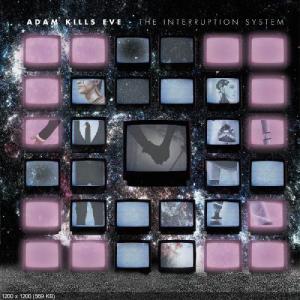I’ve always loved rock music, especially from the 70s and 80s. Of course, that genre encompasses a lot of sub-genres, which, in turn, cross a number of countries. The vast majority of rock bands from that era were from the US and the UK, but even in those two nations, there’s a lot of variety.
Some bands are huge hits in the US and not in the UK, or vice-versa. And some alleged one-hit wonders in the US aren’t one-hit wonders in the UK.
Dexys Midnight Runners falls into the latter category.

I feel that Dexys Midnight Runners is a chronically under-appreciated band. This experimental soul group had a massive worldwide hit in 1982 with “Come On Eileen,” which was a number one hit in both the US and the UK. But after that, they’re essentially known as one-hit wonders outside of the UK and Ireland.
In the British Isles, however, Dexys had another number one hit (the single “Geno” in 1980) and also had six other career singles that cracked the Top 20. To this day, they’re cult classics, especially in their hometown of Birmingham. All three of their studio albums represented changes in musical style, personnel, and appearance.
Searching for the Young Soul Rebels was Dexys debut in 1980, and it showcased a strong mixture of jazz, soul, and Celtic folk music. Too-Rye-Ay followed in 1982 and featured more strings and keyboards. The group’s third effort, Don’t Stand Me Down, came out in 1985 and is more of a classic new wave album featuring a smaller lineup.
Today, I’ll be reviewing Too-Rye-Ay. But, as I’ve found, most people know very little about Dexys (besides being the “Come On Eileen” band). So I’m about to get historical up in here, because in order to understand this weird band, you have to understand their numerous influences.
Dexys Midnight Runners was formed in Birmingham in 1978 by lead singer Kevin Rowland, an Irishman who had briefly been in a punk band called The Killjoys. After growing tired of the punk scene around Birmingham, Rowland formed Dexys with guitarist Al Archer. They were hoping to hop onboard the growing Northern Soul train.
The Northern Soul music scene started in the early-to-mid 70s and was considered a distinctly British genre. The majority of the kids in the northern cities of England listened to obscure soul and jazz records (mostly from America) that were never big anywhere until well after the fact. So when Rowland helped form Dexys, he had some intriguing (read: hipster) musical influences. It’s also worth noting that Rowland was considered a meticulous and difficult artist, and started gaining a reputation as a serious control freak.
After Dexys debut in 1980 (Searching for the Young Soul Rebels) brought them modest success, Rowland mixed things up for the next album. He brought in more string players and made his band change wardrobes. This time around, they all looked like blue-collar longshoremen, complete with overalls and big scarves.

“We didn’t want to become part of anyone else’s movement. We’d rather be our own movement,” Rowland said in an interview. “We wanted to be a group that looked like something: a formed group, a project, not just random.”
To that end, Dexys began to experiment musically, starting with Too-Rye-Ay. Before the recording of the album, violinist Helen O’Hara recruited more string players in order to give the album more depth. The brass section – Brian Maurice and Jim Paterson – was unhappy with their diminished roles and decided to quit the band (although Rowland eventually convinced them to complete their parts for the record before leaving).
The opening track is a folk-inspired tune called “The Celtic Soul Brothers,” and it became one of the three singles from the album. Track two, “Let’s Make This Precious,” is a fast-paced song with a fun ska influence, and the fourth song is an upbeat cover of “Jackie Wilson Said” by Van Morrison. It’s a great song, and all the parts fit together very nicely (I particularly enjoyed the walking bassline from Giorgio Kilkenny).
Tracks five and nine (“Old” and “Until I Believe in My Soul”, respectively) are more down-tempo ballads. I like them, but “Until I Believe in My Soul” gets a little rambling and repetitive towards the end.
The sixth song, “Plan B,” was going to be released as the first single from the album, but contract disputes with the record label caused the release to be cancelled. In my opinion, “Plan B” is another catchy tune with a memorable chorus; I’d say it’s one of the CD’s better songs.
“I’ll Show You” is short and sweet, clocking in as the shortest song on the record at 2:41. After a couple of slower songs, “Come On Eileen” concludes the CD – and it’s a real crowd-pleaser.
Lyrically and musically, “Come On Eileen” is the best song on Too-Rye-Ay, and I personally think it could be one of the most romantic songs of the decade. It blends feelings of nostalgia, hope, and love into a wonderful song.
Written in the context of Britain’s economic depression in the late 70s and early 80s, you would expect “Come On Eileen” to be gloomy and dark, but it’s an upbeat song about overcoming obstacles and going on romantic adventures, as opposed to living glum lives like the other people around them. As Rowland croons in the verse and pre-chorus:
These people ’round here, with their beaten-down eyes and smoke-dried faces,
So resigned to what their fate is
But not us, no not us
We are far too young and clever…and we’ll hum this tune forever.
Essentially, “Come On Eileen” is the perfect ending to an eclectic mix of soul and jazz, Celtic folk, and rock. Too-Rye-Ay is an enjoyable musical journey, even though Rowland’s nasal voice sounds like a weird mix of Bob Dylan and a Sesame Street character. If you like discovering a cult classic band with a wide variety of influences, Dexys Midnight Runners is the band for you.
Rating: 8/10
TRACK LISTING
- The Celtic Soul Brothers – 3:07
- Let’s Make This Precious – 4:03
- All in All (This One Last Wild Waltz) – 4:08
- Jackie Wilson Said (I’m in Heaven When You Smile) – 3:06
- Old – 5:00
- Plan B – 5:04
- I’ll Show You – 2:41
- Liars A to E – 4:10
- Until I Believe in My Soul – 7:00
- Come On Eileen – 4:07
PERSONNEL
- Kevin Rowland – vocals/guitar
- Billy Adams – guitar/banjo
- Giorgio Kilkenny – bass
- Seb Shelton – drums
- Brian Maurice – saxophone
- Paul Speare – flute/saxophone
- Helen O’Hara – violin
- Steve Brennan – violin
- Jim Paterson – trombone
- Mickey Billingham – keyboards/piano/organ/accordion



















